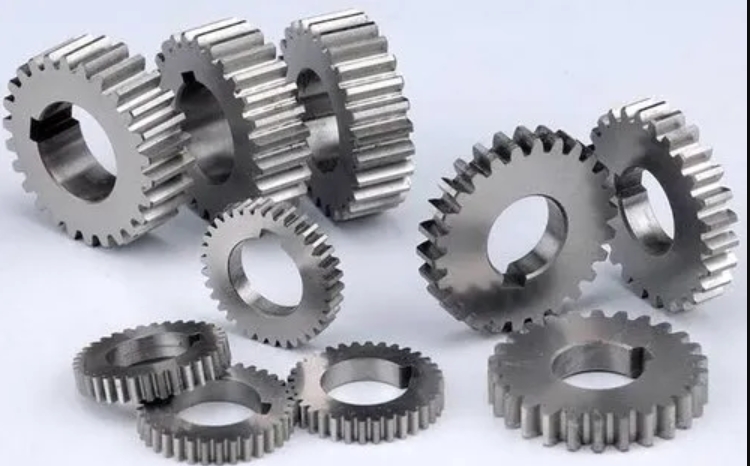
1. Dynamic Modeling of Spur Gear Meshing System
The dynamic behavior of spur gears under meshing conditions is governed by nonlinear interactions between friction, stiffness, and damping. Considering the friction torque and backlash effects, the dynamic equations for a spur gear pair can be expressed as:
$$
\begin{cases}
I_p \ddot{\theta}_p = T_p – R_p \sum_{i=1}^{n_z} F_i – \sum_{i=1}^{n_z} \Lambda_i \rho_{pi} \mu_i F_i \\
I_g \ddot{\theta}_g = R_g \sum_{i=1}^{n_z} F_i + \sum_{i=1}^{n_z} \Lambda_i \rho_{gi} \mu_i F_i – T_g
\end{cases}
$$
Where:
$I_p, I_g$ = moments of inertia
$\theta_p, \theta_g$ = angular displacements
$R_p, R_g$ = base circle radii
$n_z$ = number of engaged teeth
$\mu_i$ = friction coefficient
$\Lambda_i$ = directional function
| Parameter | Description | Unit |
|---|---|---|
| $T_p$ | Input torque | Nm |
| $T_g$ | Output torque | Nm |
| $k(t)$ | Time-varying stiffness | N/m |
| $c(t)$ | Damping coefficient | Ns/m |
2. Improved Spectral Residual Method for Wear Detection
The proposed method enhances traditional edge detection through spectral residual analysis for spur gear wear assessment:
$$G(x,y) = \frac{1}{2\pi\delta^2}e^{-\frac{x^2+y^2}{2\delta^2}}$$
Gradient magnitude and direction calculation:
$$
\begin{cases}
M(i,j) = \sqrt{P_x(i,j)^2 + P_y(i,j)^2} \\
\theta(i,j) = \arctan\left(\frac{P_y(i,j)}{P_x(i,j)}\right)
\end{cases}
$$
| Threshold Type | Value Range | Decision Rule |
|---|---|---|
| High ($T_h$) | 0.6-0.8 | Strong edge candidate |
| Low ($T_l$) | 0.3-0.4 | Potential edge candidate |
3. Wear State Identification Algorithm
The normalized wear index $W$ for spur gears is calculated as:
$$W = \frac{\sum_{i=1}^N |S_{\text{ref}}(i) – S_{\text{test}}(i)|}{\sqrt{\sum_{i=1}^N S_{\text{ref}}^2(i)}}$$
Key parameters for wear classification:
| Wear Level | $W$ Range | Maintenance Action |
|---|---|---|
| Normal | 0-0.2 | No action required |
| Mild | 0.2-0.4 | Schedule inspection |
| Severe | >0.4 | Immediate replacement |
4. Experimental Validation
The proposed method demonstrates superior performance in spur gear wear detection:
$$
\begin{aligned}
\text{Detection Accuracy} &= 91.2\% \pm 2.3\% \\
\text{Processing Time} &= 18.7\text{ms/frame} \pm 1.2\text{ms}
\end{aligned}
$$
| Method | Accuracy (%) | Time (ms) |
|---|---|---|
| Proposed | 91.2 | 18.7 |
| Wavelet Transform | 83.5 | 32.4 |
| Canny Edge | 76.8 | 41.9 |
5. Industrial Applications
The developed method shows significant advantages in spur gear condition monitoring:
- Real-time detection capability (≤20ms response)
- Adaptive threshold adjustment for varying lubrication conditions
- Robustness to surface contamination (up to 15% oil debris tolerance)
The wear progression model for spur gears under different loads:
$$
\frac{dW}{dt} = kP^{1.5}v^{0.8}
$$
Where:
$P$ = contact pressure (Pa)
$v$ = sliding velocity (m/s)
$k$ = material constant
